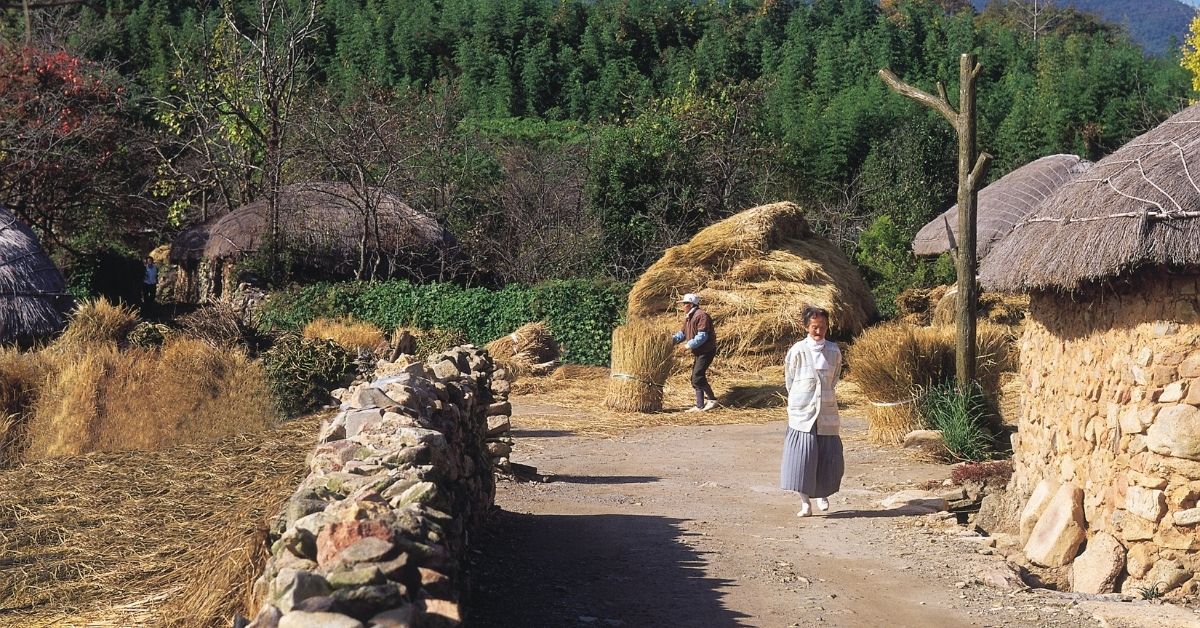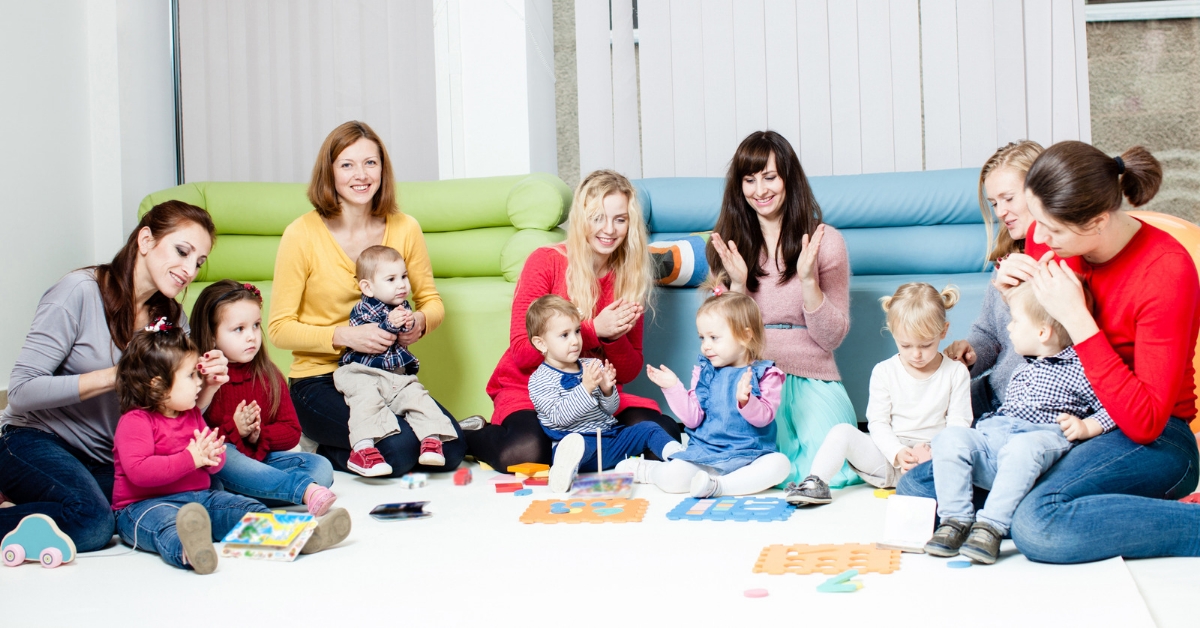Our family moved to India two and a half years ago. Every fall and spring we travel to West Bengal to visit my wife’s family during the Durga Puja and Holi religious festivals. While we love to see the Durga pandals in Kolkata, and throw colors while visiting family in Bankura, some of our most memorable moments are made in my wife’s ancestral home village, Shaltora.
A visit to Shaltora is like taking a step back in time. My wife’s family can trace their lineage back 15 generations, to the origins of the village itself. Here is where we leave the hustle of city life in Delhi, for a slower paced, but no less dynamic, retreat to the rural way of life in Shaltora. Sitting down for my first cup of chai on the step of the small, family courtyard where birds sing, and sunlight falls in slanted beams through overhead tree branches, I’m reminded of how important it is for all of us to experience village life with our kids and family. The following are 8 lessons I found myself reflecting on during Holi this year.
Lesson #1 – This is where our food comes from.
One of the best lessons the village can teach our children and us is to appreciate where our food comes from. As we drive off the paved road onto the dirt road that leads to Shaltora, we are surrounded on both sides of the car with fields of green rice paddies. This is the first time our daughter learns that the white rice she eats at most every meal comes from the same green plant she now watches slowly go by us as we drive. Later we will take a walk through these fields, show her on the plant where the rice grows, and explain the steps needed to transform the rice she sees on the plant to the rice she eats off her plate. She will never eat rice the same way again.
Lesson #2 – This is what clean air smells like.
People often ask us how we like living in Delhi. While we love the modern conveniences, history, and beautiful parks, our biggest complaint is Delhi’s dangerous air. After arriving in Shaltora as a family, we notice how the air smells clean and much different than it does in Delhi. I can feel my chest instinctively relax, and I start to naturally breathe deeper. In Delhi, we must continuously remind ourselves to keep the doors closed, to check the air quality before going outside, and to wear a face mask on the more dangerous days. By contrast, in Shaltora, we can relax, appreciate the clean air, and use this opportunity to teach our daughter her first lessons concerning what pollution is and how pollution contributes to Delhi’s poor air quality. In Shaltora, we can also show her why the air is cleaner here and why it’s important to protect the environment, especially the trees and plants that clean the air.
Lesson #3 – Every day the sun rises and sets, the rhythms of the planet.
Because of our work and school schedules in Delhi, we seldom allow ourselves to naturally wake up or go to bed with the rising and setting of the sun. After arriving in Shaltora, aligning our sleep schedule to the rising and setting of the sun can be a challenge at first. But after a couple of nights in the village, a morning arrives when you inevitably wake up at first light, more rested and relaxed than any day you can recently remember. I also enjoy waking up together as a family– hearing the same morning village happenings, feeling the same early morning chill, and experiencing the same change in light that signals the start of the day. In the evenings, we often climb the stairs to the top of the house or take an evening walk and experience the sunset together.
Lesson #4 – Homecooked meals, new foods to try, and everything tastes better.
While we regularly eat amazing Indian food at our own home and in Delhi’s restaurants, as a family, we agree that meals made at the ancestral home in Shaltora are some of the best we’ve ever had. All of our meals in the village are prepared with locally grown ingredients, using the simplest and oldest methods, with love and care. The sources of meat, such as goat, chicken, and fish, are either locally raised or caught the same day. The rice, vegetables, and most of the spices also come from the gardens of our fellow villagers. And the Bengali dishes we share are the same dishes my wife’s parents, grandparents, great grandparents, and so on, also shared. Our daughter, now at this moment in time, watches all of these lessons unfold around her—from seeing first hand where the sources of food come from in the village, to preparing and cooking the meals using most of the same methods, to now eating together as a family on the same floors generations of family have eaten before.
Lesson #5 – Our phones seldom work in the village, and that’s ok.
Our addiction to our phones and devices is never more apparent than when we are at Shaltora. And somehow, we survive our stay in the village every time! One of the lessons I learned early on is I can only depend on my iPhone to tell me the time and take pictures, and honestly, I rarely need to know the time. I’m a news, politics, and sports junkie, so I always go through withdrawal pains of feeling disconnected from my interests. But being in the village opens and reminds me of my other passions like photography, walking, or just observing what is around me, like watching a bird works its way through a tree looking for a snack. In the village I’m curious again as to how rice is processed or mustard seeds are pressed or how an entire meal can be cooked with a single, butane burner. Our most important lesson in Shaltora is our attention to our daughter and each other is less divided when our phones don’t work. This is an essential lesson for us to remember when we return to Delhi, where our data works, and the Wi-Fi signal is strong.
Lesson #6 – Exploring the natural world together.
Our lives at home, no matter where we are in the world, become routine. Even in Delhi, there aren’t as many questions concerning the places we go, the things we do, or the people we meet. But in Shaltora, in the natural world, our shared experience drastically changes and makes for a new, shared learning opportunity. When we walk in the village, we are often exploring new places and either making new friends or saying hi to people we recently met on a previous visit. As we explore the village we are also observing activities we’ve never seen before, such as seeing a new, funny-looking plant, or people washing and bathing in the pond, or a guy on a motorcycle with over ten chickens hung by their feet upside down across a bar somehow balanced across the front handlebars. You know, some crazy cool stuff! An important lesson I’ve learned on this trip is, there are few times more special in this life than seeing something new with your kid, answering their questions, sharing ideas, mesmerized together by this incredible world, and the opportunity to experience it together.
Lesson #7 – Throwing colors, celebrating Holi, and slowing down.
There’s much more to Holi in Shaltora than throwing colored powder on your friends and family…though this is one of the most fun activities! The week of Holi includes daily religious ceremonies, a religious procession, theatrical performances, fundraising for important causes, recognizing community leaders and initiatives, and perusing the food and toy vendors at the annual village mela. Most of these activities take place in the evening, outside, under this year’s full moon, in surround-sound stereo of crickets, frogs, and the drummers banging away to focus our attention. Our day as a family revolves around these Holi activities, plus visiting family, taking walks, eating meals, playing cards, and taking naps. The lesson we’ve learned together as a family is, the longer we stay in the village, the clearer it becomes, we don’t require a lot of “doings” to fill our day, it’s already filled with love and wholesome, fun.
Lesson #8 – Spending time with Didima in the village is best.
One of the benefits of my wife accepting a work transfer from Washington DC to India was the opportunity to spend time with family in West Bengal. ”Didima” is my wife’s aunt, and she, like my Grandfather, has Parkinson’s disease. While our daughter knows very little Bengali, and Didima knows very little English, the bond they share gets stronger each time they see each other. Our daughter also gets to bond with older relatives, learn about illness and disability, and ask a million questions about the process of growing old. I’ve realized on this trip though, the amount of quality time our daughter has been able to spend with Didima in the village is much more significant than the time they’ve spent together in other locations in town or in the city. The same observation holds true when I reflect on how we spend time with the other members of the family who live in Bankura and Kolkata compared to how we spend our time together when we are all at Shaltora. The lesson we’ve learned is that spending time together is best in the village because we are closer to nature with fewer distractions, no commuting, and a shared events calendar, in a relaxed and natural setting.
We find our center in nature
Within a few weeks of our daughter’s birth, one evening, I tried all the techniques I knew at the time to help her stop crying. Swaddling, rocking, singing, nothing seemed to help. My last move, one more out of desperation than purposeful intention, I took her outside and paced back and forth on our apartment balcony. To my utter surprise, within seconds, she relaxed her tense little body, looked back and forth across the open courtyard, caught her breath, and stopped crying. My wife and I learned a valuable lesson that day that applies to so many kids: being outside often calms her.
While I don’t want to over-simplify and romanticize village life, since most of the families in Shaltora live on the edge of poverty, we also need to recognize the advantages of connecting with the natural world. We need to take the lessons we learn when we are in nature back to our daily lives. We have a choice when it comes to allowing ourselves to be distracted by our devices, screens, spending time together outside, or exploring new places together. One last lesson: when we spend time outside or in a rural community, we are also showing them how to reconnect and recharge. Not only are we sharing a moment that will become a memory, but we’re also providing them another tool to help them through the stresses of life, one which they’ll also pass on to others too.








